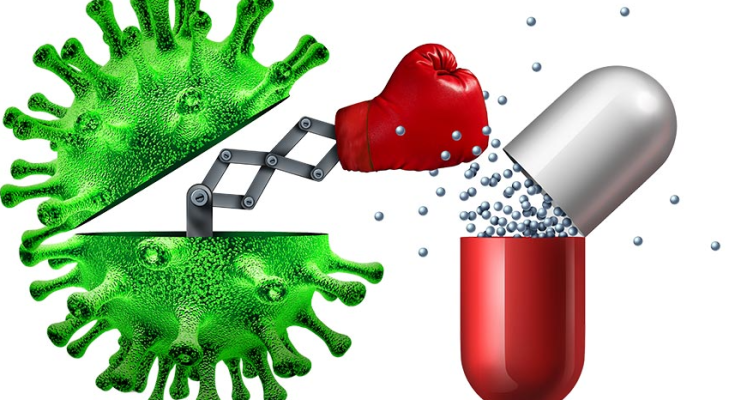Emerging Threats: Addressing Antibiotic Resistance and Infectious Diseases
Introduction:
In recent years, the world has witnessed the emergence and spread of infectious diseases, fueled by factors such as globalization, urbanization, and climate change. At the same time, the rise of antibiotic resistance has posed a significant challenge to public health systems, making it increasingly difficult to treat common infections. In this article, we will explore the dual threats of antibiotic resistance and infectious diseases, assess their impact on global health, and discuss strategies for addressing these emerging challenges.
1. The Challenge of Antibiotic Resistance:
Antibiotics have been one of the most significant medical advancements in human history, revolutionizing the treatment of bacterial infections and saving countless lives. However, the overuse and misuse of antibiotics have led to the emergence of antibiotic-resistant bacteria, rendering many antibiotics ineffective and threatening the effectiveness of modern medicine.
Antibiotic resistance occurs when bacteria develop mechanisms to evade the effects of antibiotics, making infections more difficult to treat and increasing the risk of complications and mortality. Factors contributing to antibiotic resistance include the inappropriate use of antibiotics in human and animal healthcare, inadequate infection control practices, and the lack of new antibiotics to replace those that have become ineffective.
The rise of antibiotic resistance has profound implications for public health, increasing the burden of infectious diseases, prolonging hospital stays, and driving up healthcare costs. Without effective antibiotics, common infections such as urinary tract infections, pneumonia, and tuberculosis become more difficult to treat, leading to higher rates of treatment failure and mortality.
2. The Global Threat of Infectious Diseases:
In addition to antibiotic resistance, the world faces a growing threat from infectious diseases, including both emerging pathogens and re-emerging diseases. Factors such as population growth, urbanization, deforestation, and climate change create conditions conducive to the spread of infectious diseases, increasing the risk of pandemics and outbreaks.
Recent outbreaks of infectious diseases, such as Ebola, Zika, and COVID-19, have highlighted the vulnerability of global health systems to emerging threats. These outbreaks have caused widespread disruption, economic loss, and loss of life, underscoring the need for robust preparedness and response mechanisms to address infectious disease threats.
Infectious diseases also disproportionately affect vulnerable populations, including children, the elderly, and people living in poverty or conflict-affected areas. Lack of access to healthcare, sanitation, and clean water exacerbates the impact of infectious diseases, leading to higher rates of morbidity and mortality in disadvantaged communities.
3. Strategies for Addressing Antibiotic Resistance and Infectious Diseases:
Addressing the dual threats of antibiotic resistance and infectious diseases requires a comprehensive and multi-faceted approach, involving collaboration between governments, healthcare providers, researchers, and civil society. Some key strategies for addressing these emerging challenges include:
a. Antibiotic Stewardship:
Antibiotic stewardship programs promote the responsible use of antibiotics in human and animal healthcare, aiming to preserve the effectiveness of existing antibiotics and minimize the development of resistance. These programs involve educating healthcare providers and patients about the appropriate use of antibiotics, implementing guidelines for antibiotic prescribing, and monitoring antibiotic use and resistance patterns.
b. Infection Prevention and Control:
Infection prevention and control measures play a crucial role in reducing the spread of infectious diseases in healthcare settings and the community. These measures include hand hygiene, environmental cleaning, personal protective equipment, and vaccination. By implementing robust infection prevention and control practices, healthcare facilities can reduce the risk of healthcare-associated infections and prevent outbreaks of infectious diseases.
c. Surveillance and Monitoring:
Surveillance systems for antibiotic resistance and infectious diseases are essential for monitoring trends, detecting outbreaks, and guiding public health interventions. These systems collect data on antibiotic resistance patterns, disease incidence, and antimicrobial use, providing valuable information for policymakers, healthcare providers, and researchers. By strengthening surveillance and monitoring capacity, countries can better understand and respond to emerging threats to public health.
d. Research and Innovation:
Investment in research and innovation is critical for developing new antibiotics, vaccines, and diagnostics to combat antibiotic resistance and infectious diseases. Governments, pharmaceutical companies, and research institutions must prioritize research into novel antimicrobial agents, alternative treatment modalities, and vaccines for emerging pathogens. Additionally, efforts to promote the development of rapid diagnostic tests and point-of-care technologies can improve the timely detection and management of infectious diseases.
e. Global Cooperation and Coordination:
Addressing antibiotic resistance and infectious diseases requires coordinated action at the global level, involving collaboration between countries, international organizations, and civil society. Initiatives such as the Global Action Plan on Antimicrobial Resistance and the International Health Regulations provide frameworks for cooperation and coordination on antimicrobial resistance and infectious disease preparedness and response. By working together, countries can share knowledge, resources, and best practices to strengthen global health security and mitigate the impact of emerging threats.
Conclusion:
Antibiotic resistance and infectious diseases represent significant challenges to global health, with far-reaching implications for human health, healthcare systems, and economic development. Addressing these emerging threats requires a concerted effort from governments, healthcare providers, researchers, and civil society to promote antibiotic stewardship, infection prevention and control, surveillance and monitoring, research and innovation, and global cooperation and coordination.
By implementing evidence-based strategies and investing in sustainable solutions, countries can mitigate the impact of antibiotic resistance and infectious diseases, protect public health, and build resilient health systems capable of responding to future outbreaks and pandemics. Ultimately, addressing these emerging challenges requires a collective commitment to promoting health, equity, and security for all.
For more information visit: elmzaango.com
For more information visit: newsburing.com
